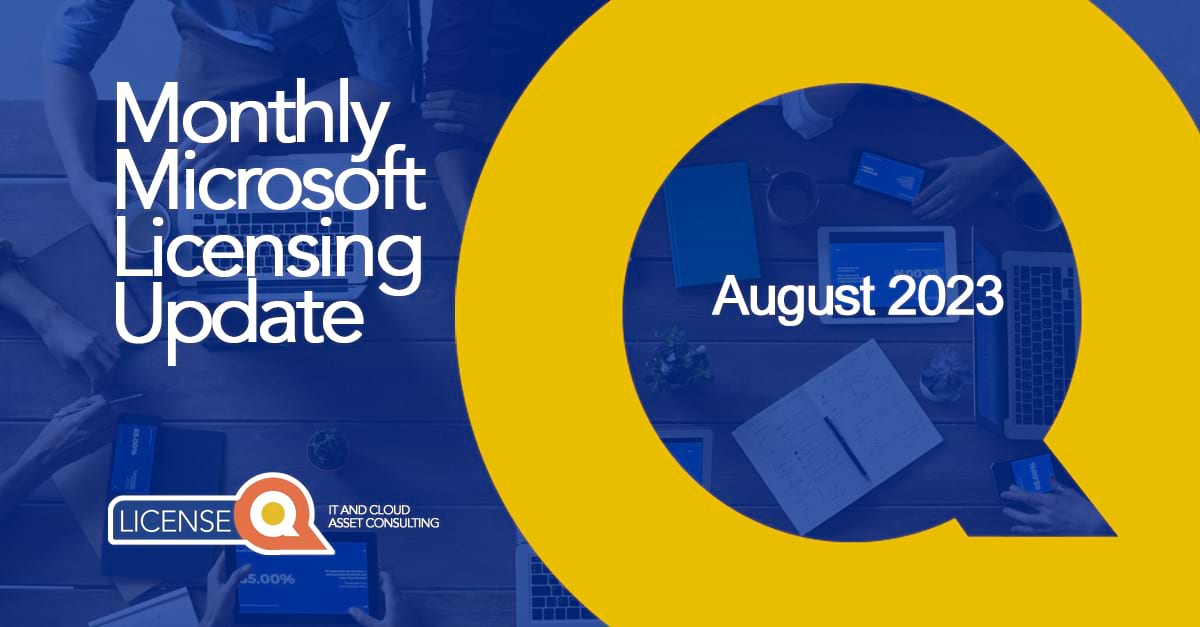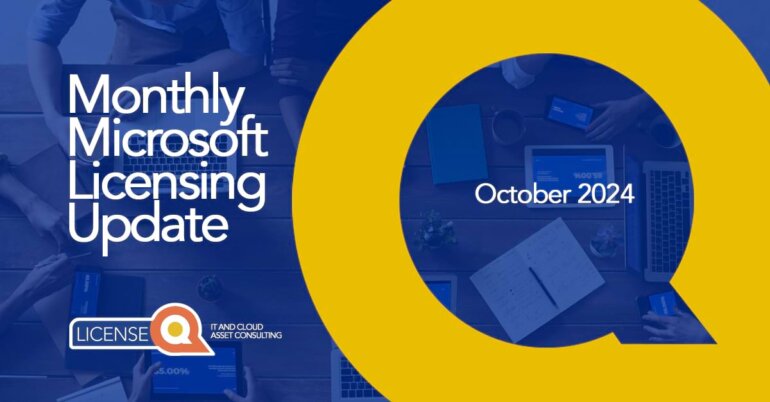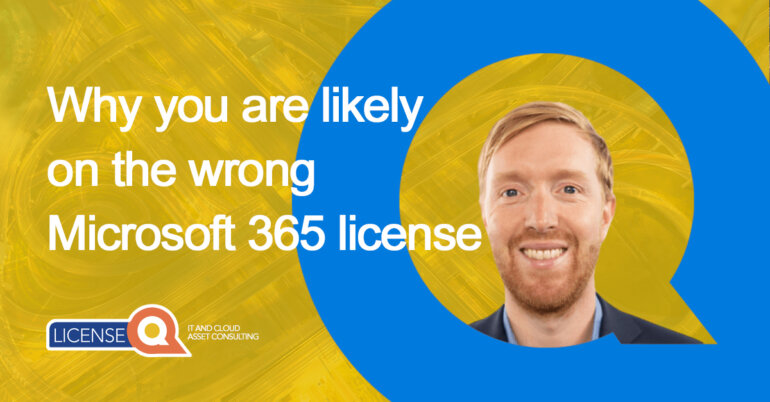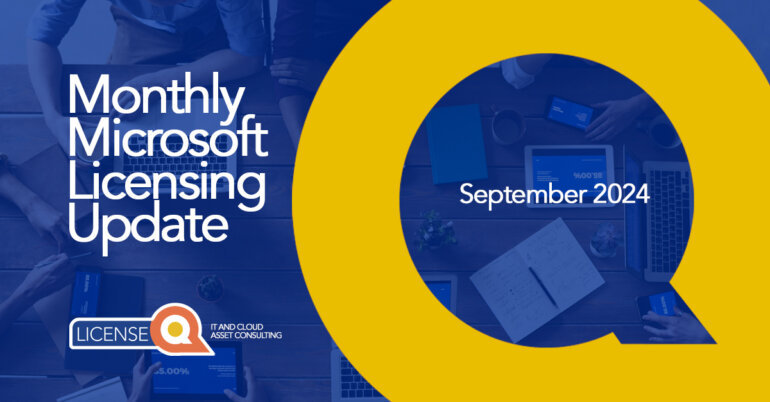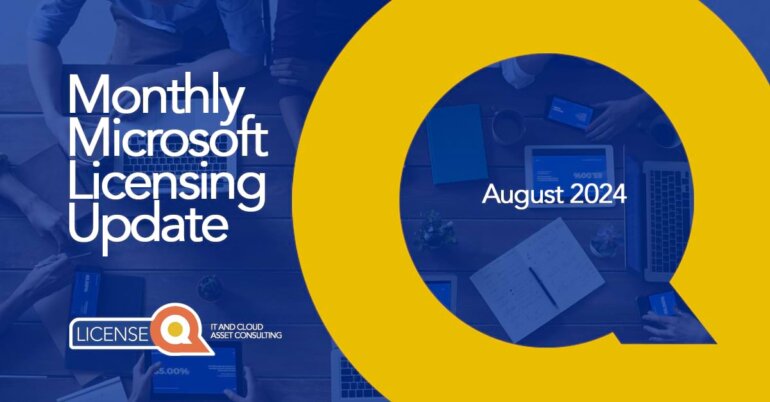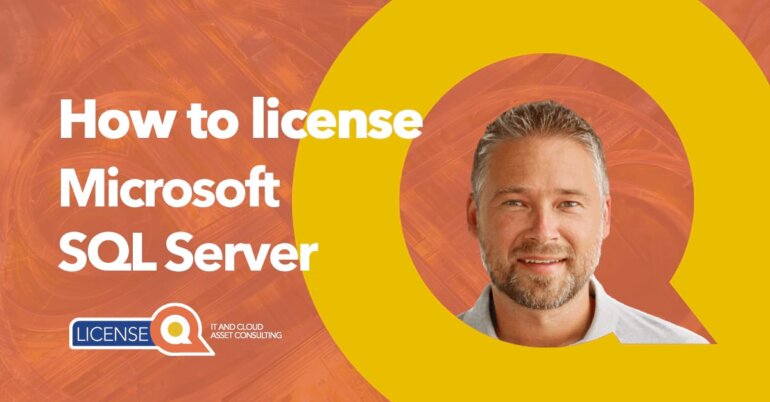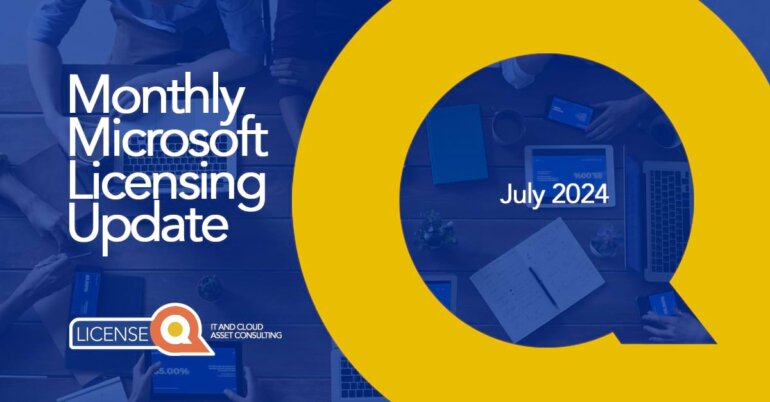Licensing Update August 2023
This month’s changes to the Microsoft Product terms:
- Amazon Workspaces Deployments
- Universal Licensing Terms for Online Services – Azure availability
- Azure Customer Solution Clause
- M365 – SharePoint Syntex & Microsoft Defender Vulnerability Management
- Dynamics 365 ERP (minimum purchase requirements)
- Office 365 F3
- Windows Desktop Operating System
- Many updates to Power Platform
1. Amazon Workspaces Deployments
There is a new page in the Product Terms dedicated to Amazon Workspaces Deployments.
Amazon WorkSpaces is a virtual workspace that you can setup and run from your Amazon Web Services (AWS) platform. It is basically a Virtual Desktop Infrastructure from AWS, like Azure Virtual Desktop from Microsoft.
If you have an M365 E3/E5, M365 A3/A5 or Microsoft Business Premium license, you may install and use a single active instance of the Microsoft 365 Apps for Enterprise/Business software in Amazon WorkSpaces. Be advised that this is only for the Enterprise Monthly Channel or Current Channel edition.
If you have Microsoft Project online (plan 3 or plan 5) or Visio online Plan 2, you can also run one active instance in Amazon WorkSpaces.
2. First-Party Consumption Services
There is also a change to the Universal Licensing Terms for Online Services in the Product Terms. The below clause was added:
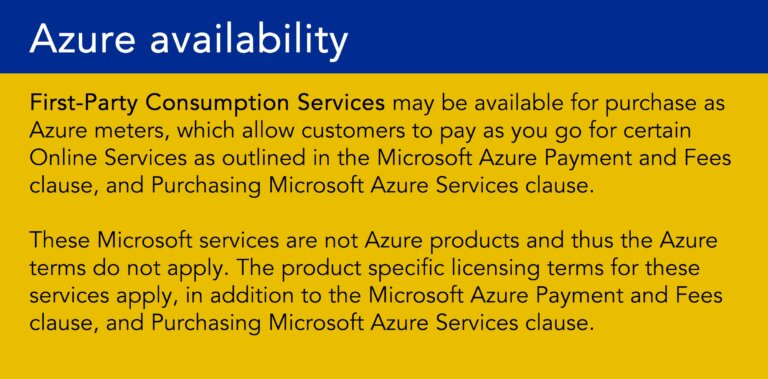
You might wonder what First-Party Consumption Services are? We are wondering the same thing!
But when you think about certain Microsoft products that are also (being made) available through Azure, such as PowerApps, Power Automate or Defender Products, then it starts to make sense.
You can see First-Party Consumption Services as Microsoft Cloud Services that are available standalone, but are also available as an Azure meter. So why does Microsoft make this distinction? Simply because they already have their own set of rules as a separate product, so they should not be viewed as Azure products.

3. Azure Customer Solution
A while back, Microsoft added the Azure Customer Solution clause to the Azure page of the Product Terms.
They have now expanded this clause with an additional clarification, as it’s intention was not clear from the start for customers. The clause is about your responsibility as the end customer of a certain Azure solution.
The addition to the clause is: “(2) obtaining any necessary licenses related to Standards in a Customer Solution. Notwithstanding anything to the contrary in Customer’s volume licensing agreement, Microsoft has no defense obligation or liability for any infringement claim for patents alleged to be infringed by the implementation of any Standards in a Customer Solution.”
Microsoft wants to ensure that you yourself are properly licensed to use any solution you create, and that you acquire the correct licenses for certain standards (like MPEG-2, EDGE or GPRS). Additionally, Microsoft cannot be held accountable if you don’t comply to the correct licensing standards.
4. M365
Language has been added for Microsoft 365 SharePoint Syntex stating that you can use these solutions on Amazon WorkSpaces.
Microsoft also added language to state that you can use Microsoft Defender Vulnerability Management on up to five concurrent devices.
5. Dynamics 365
Microsoft changed the minimum purchasing requirements for Dynamics 365 ERP applications.
Before you could purchase a minimum of 20 combined licenses of Finance, Commerce, Supply Chain Management or Project Operations. This has now been removed.
This means that you now need a 20 license minimum for any of these licenses if you want to use that application.
6. Office 365 F3
Microsoft has removed all mention of O365 F3 from any and all programs except from the Microsoft Customer Agreement. This means that starting today, for new contracts, you will not be able to purchase a standalone O365 F3 unless you do it in MCA (CSP or Direct).
7. Windows Desktop Operating System
Microsoft added Windows 10 IoT Enterprise LTSC 2021 (Per Device) to MCA, MPSA, and SS Availability tables.
8. Power Platform
- Power Apps Plan (User SL) is now titled Power Apps Premium (User SL). Power Apps per User is still in the Product Terms, for active users. New contracts will move towards purchasing Power Apps Premium (User SL) instead of Power Apps Plan (User SL). No changes to the licensing, though there are functionality changes. For more on this you can check out the Power Apps Licensing guide.
- Same applies to Power Automate Premium (User SL) and Power Automate per user (User SL). This also means there are functionality changes. Additionally, Power Automate per flow will be changed to Power Automate Process – a new license that covers both cloud flows as well as RPA bots. There is no minimum quantity, yet the price of each unit is higher and starts at $150.
- The Power Automate product series has now got the RPA Add-on instead of this being a separate product and is called Power Automate Hosted RPA Add-on
- Power Automate Process Mining Add-on has been added to the table of products
- PowerBI premium Embedded licenses have been consolidated in one line (E1 to E3)
- Power Pages has name changes from Capacity Pack to just Power Pages Anonymous and Power Pages Authenticated
- Prerequisite table has been updated to reflect the base licenses for Virtual Agents capacity add-on (Power Virtual Agents), Power Automate Hosted RPA Add-on (Power Automate Premium per user Plan), Power Automate Process Mining Add-on (Power Automate Premium per User plan)
- Power Pages has Extended Use Rights, meaning you can use functionality for Power Pages when you have a license for Dynamics 365 Enterprise license, Power Apps per app plan and Power Apps per User plan
- Azure availability clause was removed (moved to Universal License Terms – see point above)
We hope you found this month’s licensing update useful. As always, if you have any questions or remarks, do get in touch at info@licenseq.com.

